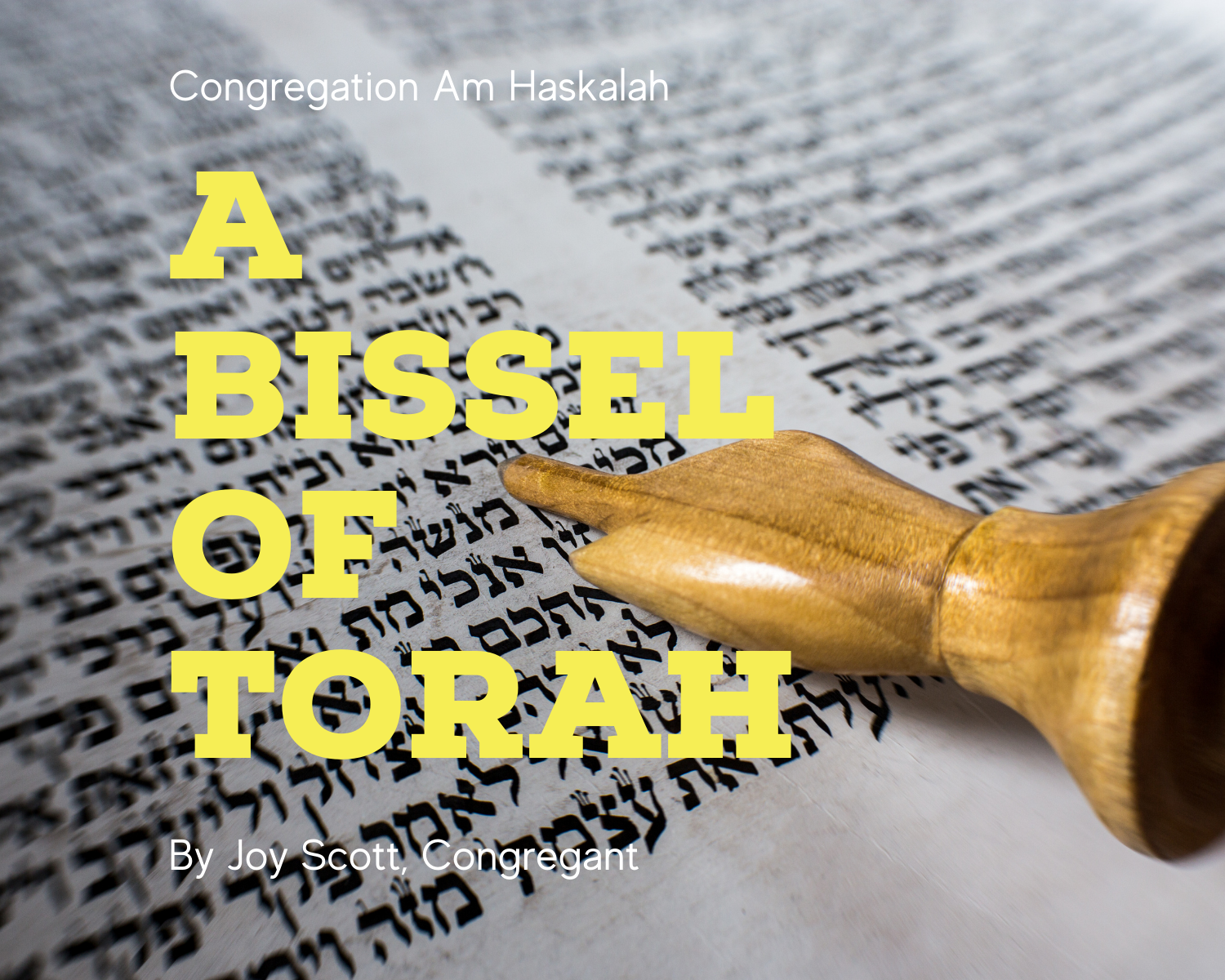By Joy Scott, Am Haskalah Congregant
Last week, we read parsha Tazria, which introduced us to the bizarre malady of ‘Tzara’at.’ In effect, this was considered physical evidence of a spiritual failing, disclosed in a myriad of dermatological disorders. The mystery shrouding parsha Tazria was the absence of any specific transgression, or identification of any victim who would have necessitated this punishment.
An individual afflicted with ‘Tzara’at’, would be referred to as a ‘Metzora.’ This person could experience skin discoloration of the face or limbs, blemishes or blisters over the entire body, and even mold and decay within their home.
Until the person afflicted with ‘Tzara’at’ was considered cured, the individual was banished from his or her community and required to endure numerous cleansing rituals. In an extraordinary ‘Torah Moment,’ the ‘Chafetz Chaim’(1), realized that in neither parshiot is any sin or transgression mentioned. No rationale is provided in the Torah for the stigma and shame of the symptoms of ‘Tzara’at’, nor for the ostracism from the community. The sages decoded the mystery by relating these parshiot to other instances in the Torah when someone was afflicted with a form of skin discoloration.
The first occurred when Moses, at the burning bush, said to God that the Israelites would not believe in him. His hand briefly turned “as leprous as snow”(2). The second event happened when Miriam spoke against the wife of her brother, Moses(3). The sages utilized these examples to create the sin of ‘evil speech’, lashon hara.
Even though ‘lashon hara’ is not singled out in the Torah as a prohibition, our sages regarded it as one of the worst of all sins – as evil as the three cardinal sins of idolatry, murder, and incest, combined (4).
According to Rashi, any individual who engaged in ‘lashon hara’ was required to bring “two live birds as offerings to the entrance of the Sanctuary, because birds continually chatter and chirp”(5), a metaphor for idle talk and chatter. The Psalmists compared slanderous talk to “sharp arrows of a warrior”(6).
To understand the sense of the magnitude of ‘lashon hara’ is the awareness that Judaism is less a religion of holy people and holy places, than it is a religion of ‘words’. Words can be creative, but also destructive. Disparaging speech sows seeds of distrust and envy. We learn from the Talmud that ‘evil speech’ is the root cause of all slander(7).
The victims of ‘lashon hara’ are susceptible to serious harm: broken families or relationships, negative effects on their careers, loss of friends, erosion of self-esteem and a host of psychological or physical maladies.
Our sages tell us: “Do not judge another until you reach his or her place”(8). At the end of every ‘Amidah’ are the words: “We pray to God to help us close our lips, so that we do not speak badly about others, nor react, when others speak badly about us” (9).
FOOTNOTES:
(1) ‘Chafetz Chaim’ (Jewish sages of the Mishna and Talmud)
(2) EXODUS (4:7)
(3) NUMBERS (12:1-5)
(4) Mishna (12:5)
(5) Rashi “On Leviticus”
(6) Psalm (120-4)
(7) Talmud (15b-16a)
(8) Avot (2.5)
(9) www.MyJewishLearning.com
